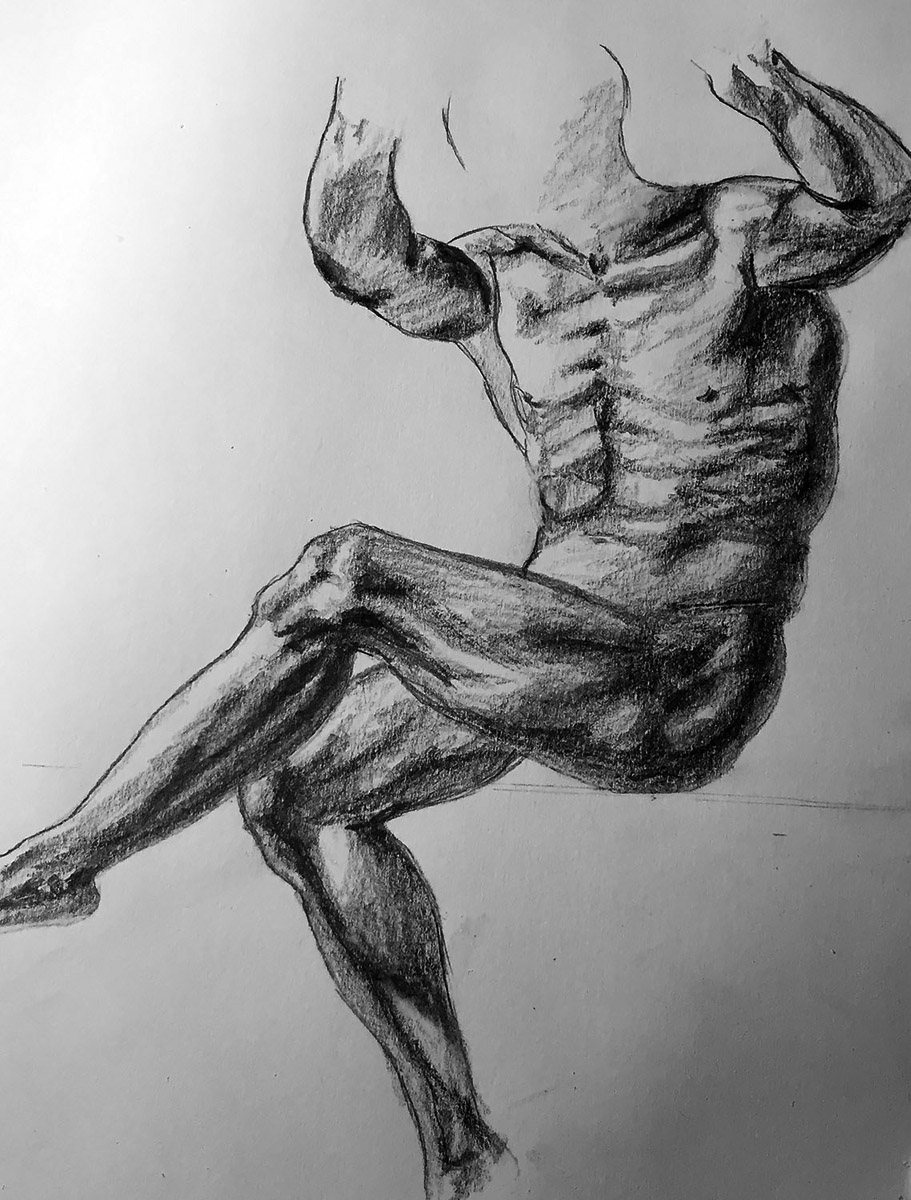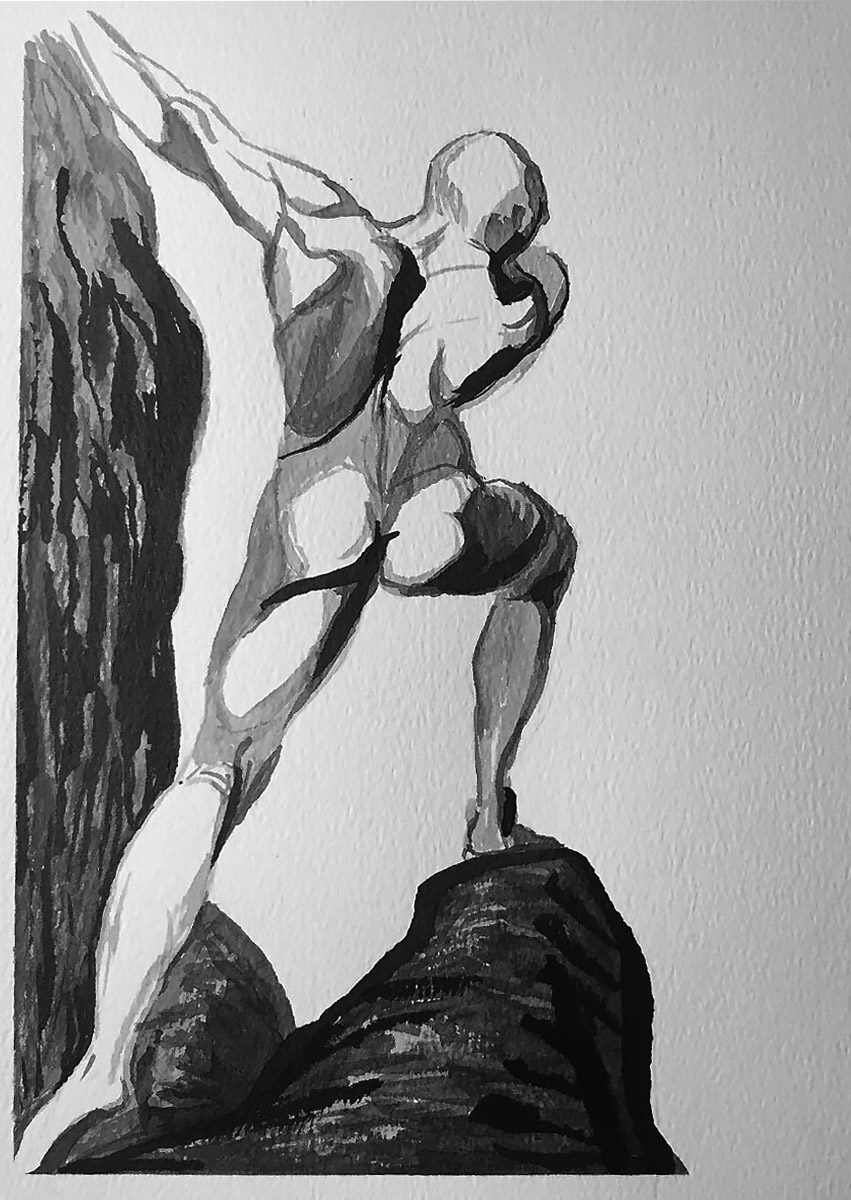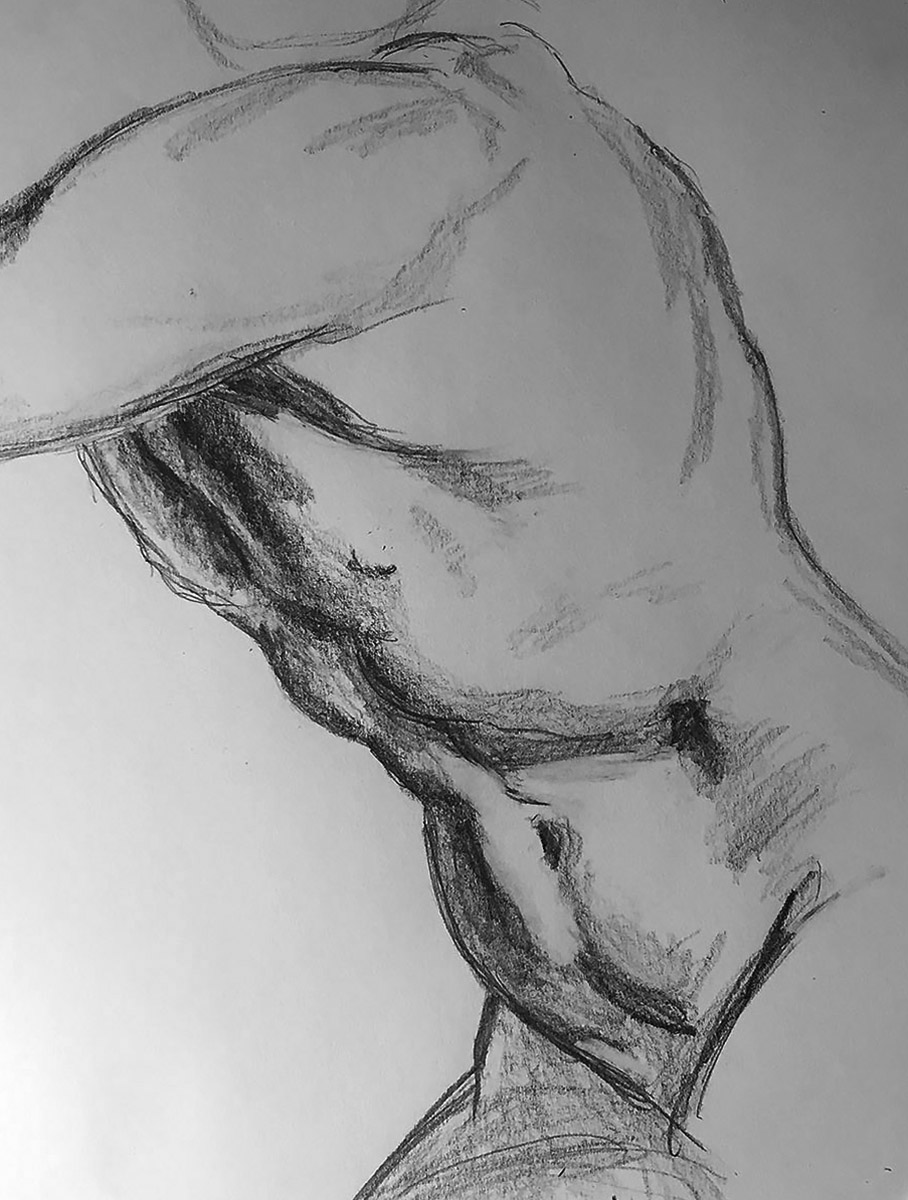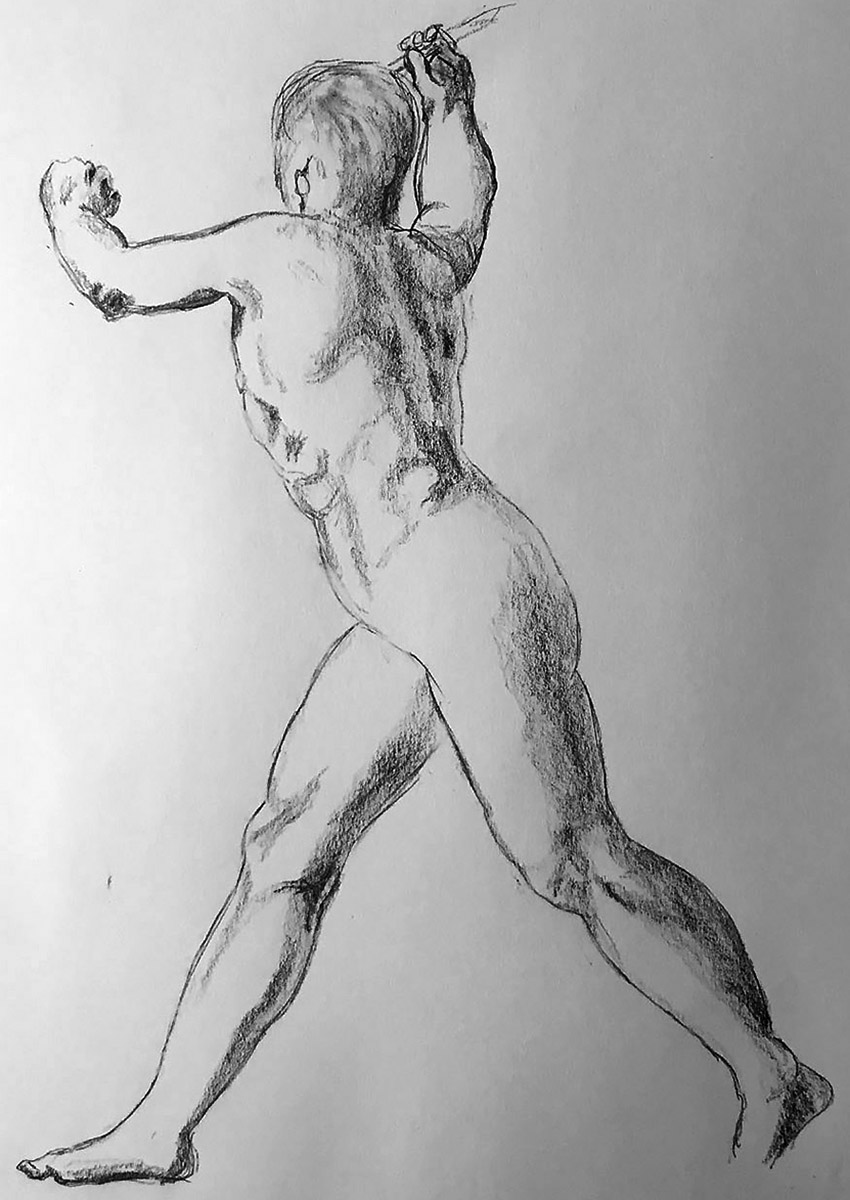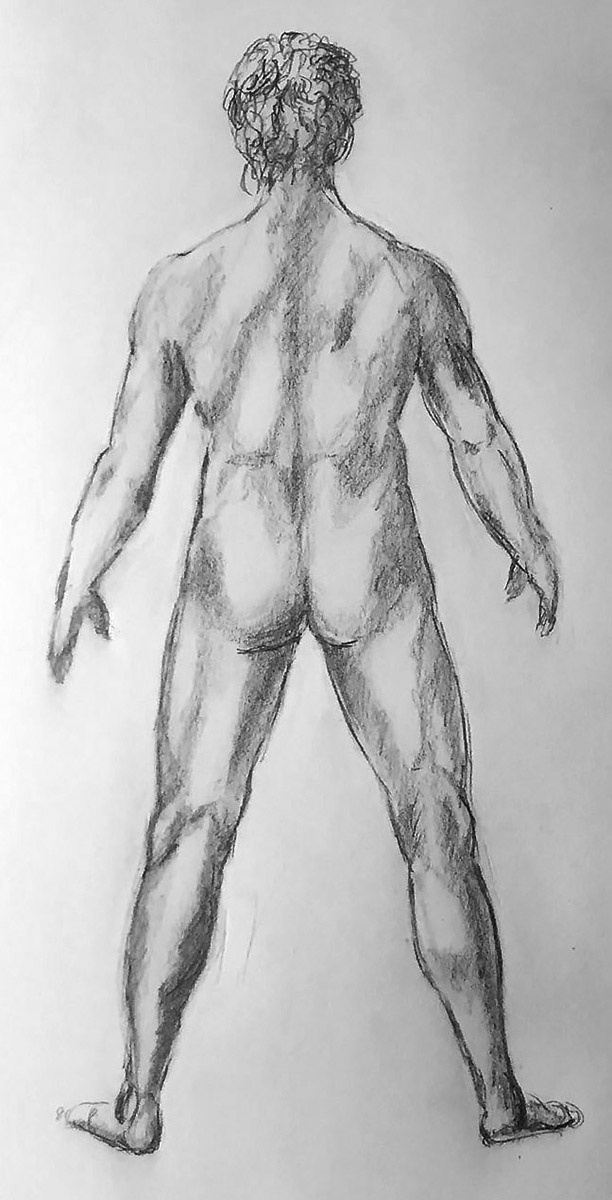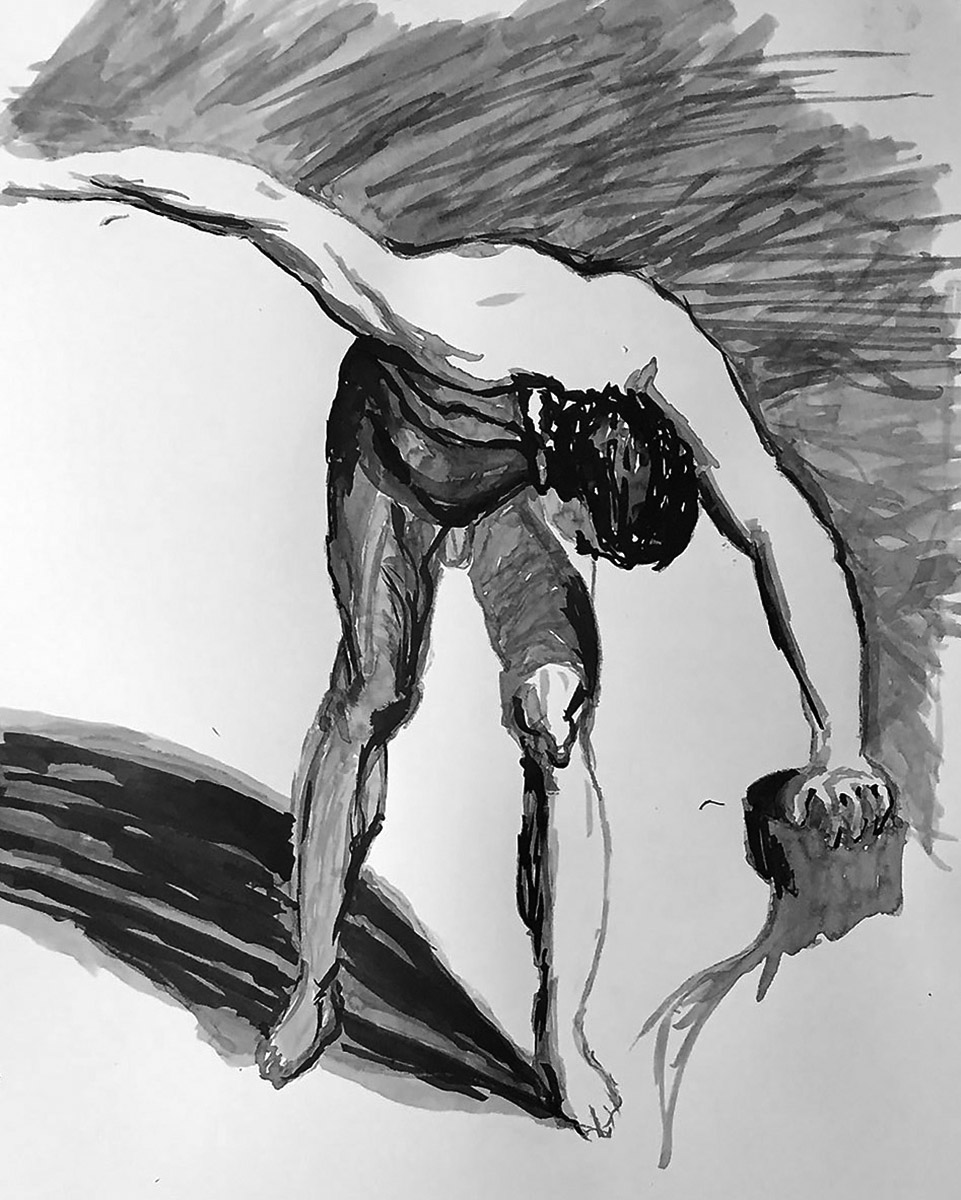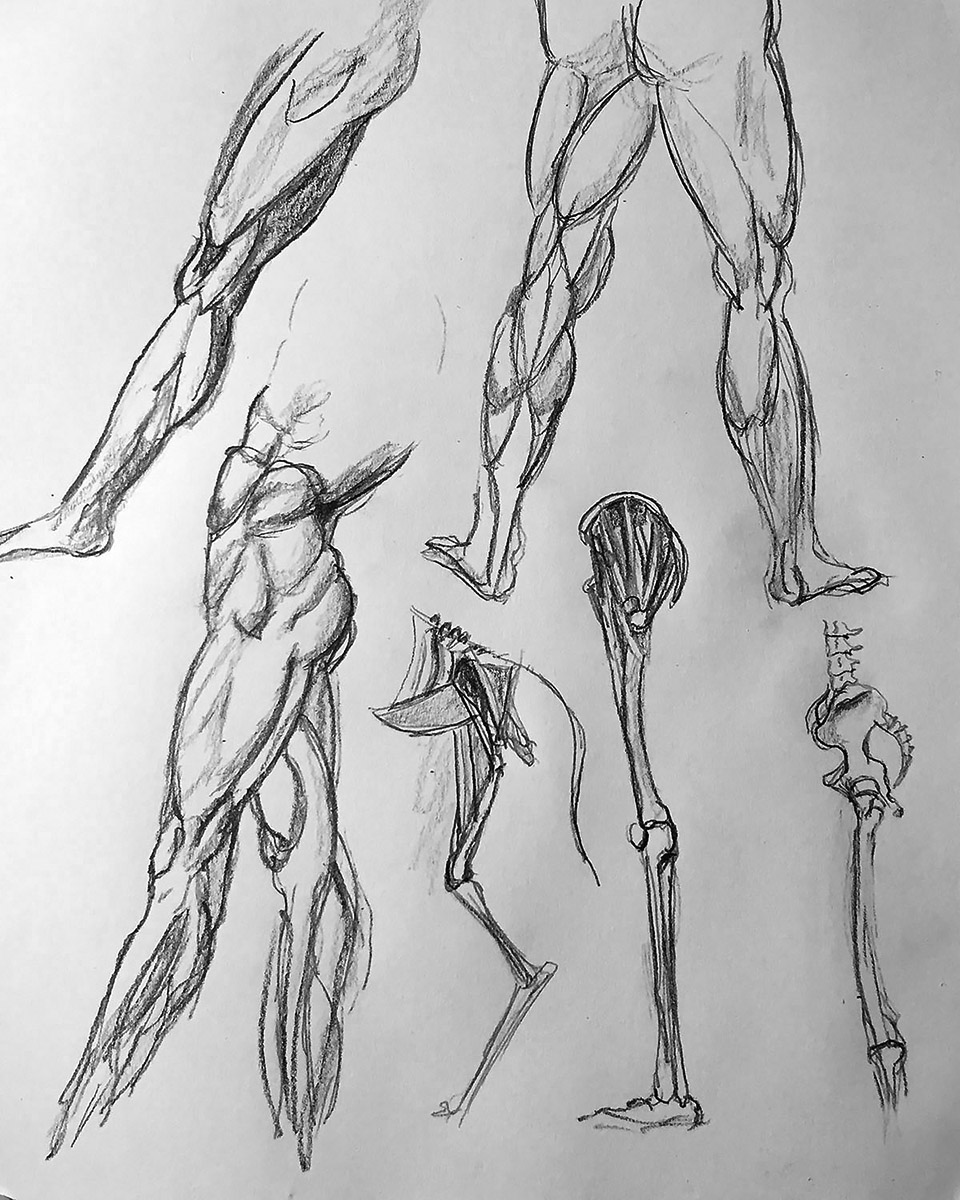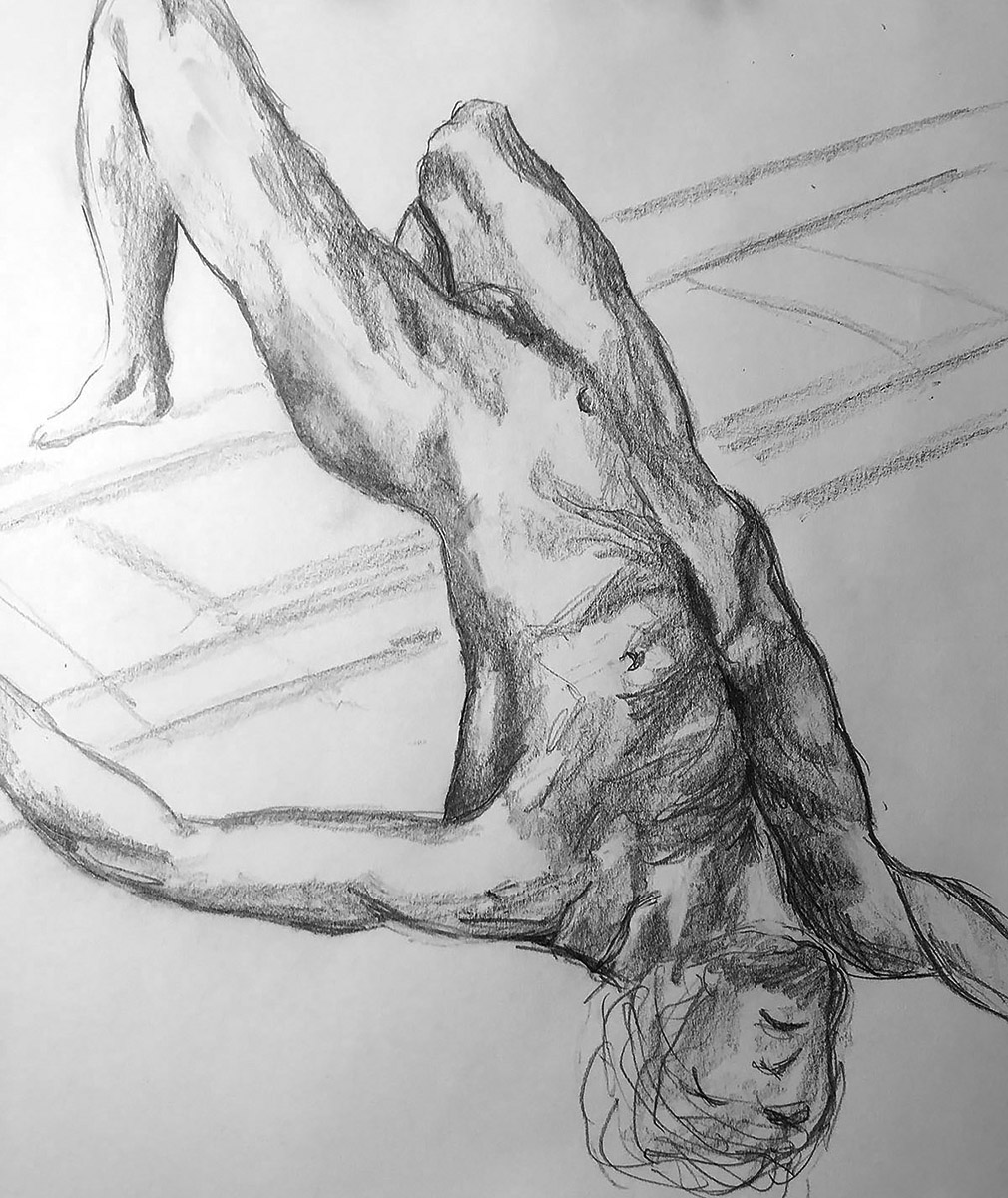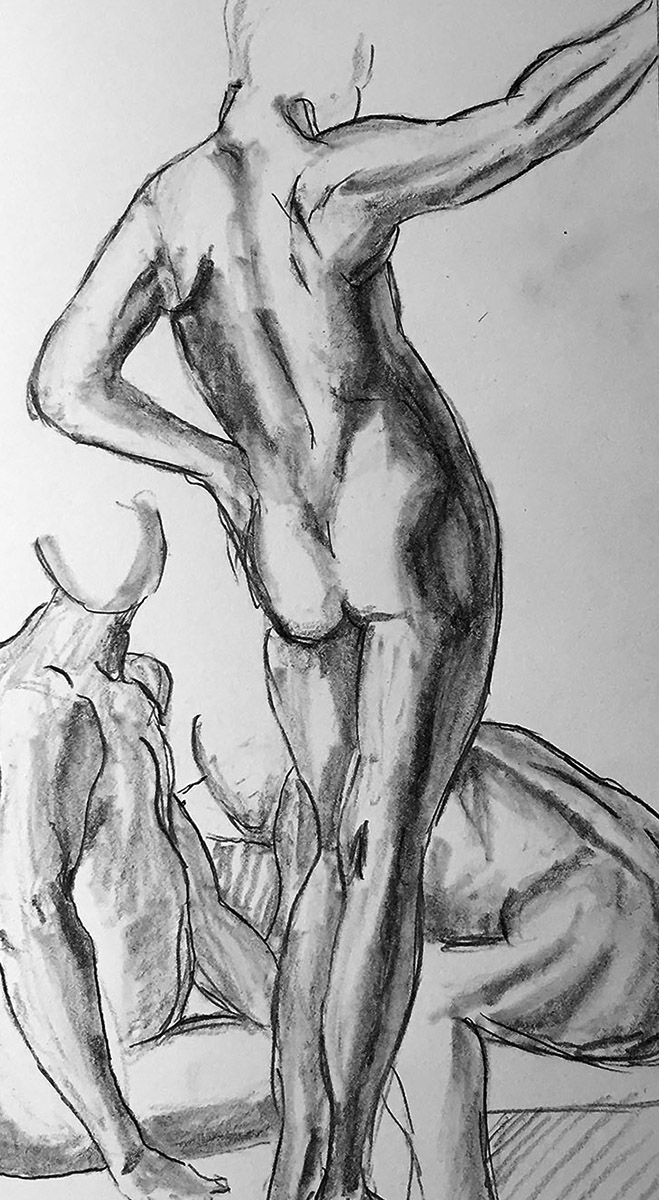
This next drawing is of three nudes copied from a work by Jacopo Pontormo. Pontormo’s drawing is in the collection of the Pierpont Morgan Library & Museum in New York. The museum is located across the street from, and I kid you not, the Polish Embassy and Consulate. Would it be too off topic to talk and make jokes about the Polish? I will try with all my might to focus on the drawings and the Morgan Museum.
The Morgan Museum consists of the East and West Morgan Stanley Galleries, Morgan’s Study, The Morgan Dining Room and most importantly The Morgan Souvenir Shop. It is there that you can purchase coffee mugs, tote bags, an umbrella, a necktie that has a map of New York City on it, just in case your phone battery dies, and so many other great items. You can also buy a tray that is inscribed with the words “There is no friend as loyal as a book”. It is perfect for that special someone in your life that you have hurt so deeply that they no longer even try to interact with the outside world. The price of the tray is $42 plus $24 for shipping. Now let’s get back to the drawing.
Jacopo Pontormo’s drawing is described as “Standing Male Nude Seen from the Back, and Two Seated Nudes”. Apparently on the other side of the drawing is another bonus drawing entitled “Striding Nude with Arms Raised”. Since I forgot to turn the paper over I only copied the one drawing*. According to the description, the media he used is “Red chalk with smudging”. I have looked everywhere for smudging and I couldn’t find it. So I drew my version with pencil. Pontormo’s drawing on the back was done with black, red, and white chalk and since I don’t see the word “smudging” I’ll assume there was no smudging involved.
*please note that I drew my copy from a reproduction and did not actually handle the original artwork.

